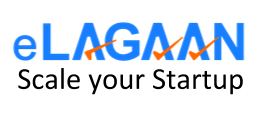- India: +91 96 2020 3546 USA: +1 650 200 3546
Secure your computer
By using safety measures and good practices, you can protect your privacy. Following tips will help you lower your risk while you're online.
Install a firewall
A firewall is a software program or piece of hardware that blocks hackers from entering and using your computer. Hackers send electronic probes, or pings, to thousands of computers and wait for responses. Firewalls prevent your computer from responding to these random pings. A firewall blocks communications to and from sources you don't permit.
Some operating systems have built-in firewalls but may be shipped in the "disabled" mode. Be sure to enable your firewall. It is best to have a third-party software firewall in addition to your operating system firewall. It provides an extra layer of protection by alerting you to outbound traffic. Anytime a program tries to access the Internet, the user will be alerted. You should regularly update your firewall.
Use anti-virus software
Anti-virus software protects your computer from viruses that can destroy your data, slow down or crash your computer, or allow spammers to send e-mail through your account. Anti-virus protection scans your computer and your incoming e-mail for viruses, and deletes them.
- Keep your anti-virus software updated to cope with the latest bugs circulating the Internet. Most anti-virus software includes a feature to download updates automatically when you are online. Outdated definitions offer nothing but a false sense of security
- Make sure your anti-virus software is continually running and checking your system for viruses, especially if you are downloading files from the Web or checking your e-mail.
- Set your anti-virus software to check for viruses when you first turn on your computer.
- Give your system a thorough scan regularly and periodically.
Use anti-spyware software
Spyware is software installed without your knowledge or consent. It can monitor your online activities and collect personal information while you surf the Web and then uses that information to display advertising. Some kinds of spyware, called keyloggers, record everything you type in – including your passwords and financial information. Your computer may be infected with spyware if you receive a sudden flurry of pop-up ads, are taken to Web sites you don't want to go to, or if your computer begins to run slowly.
Spyware protection is included in some anti-virus software programs. Check your anti-virus software documentation for instructions on how to activate the spyware protection features.You can also download 3rd party popular spywares like SpywareBlaster, Spybot Search & Destroy etc.
- Download software only from sites you know and trust. Piggybacking spyware can be an unseen cost of many "free" programs.
- Keep your anti-spyware software updated and run it regularly.
- Don't click on links in pop-up windows or in spam e-mail.
Manage your system and browser to protect your privacy
Setting up your HOSTS file will prevent spyware and any kind of "malware" (short for malicious software) from communicating outside your computer. This allows you to surf the Net anonymously.Countless numbers of hackers, vandals or unscrupulous marketers would love to hijack your Web browser or give your computer some nasty worm. Sometimes malware is bundled with shareware and freeware. Other times it can get on your computer by opening an infected file."Tracking cookies" get on your computer from Web sites and even online ads. They track your Web surfing habits and report back. This helps the ad servers know which ads to place on your computer.
Fortunately, there is a list of known malware and ad servers that want to communicate with your computer. Enter the domain name for the known offenders and your computer's address (127.0.0.1) in the HOSTS file. All attempts to contact the mother computers on the Internet will lead back to your local computer. The requests will die.You don't have to enter the possible offenders manually. Such files are available on the Internet. It's important to check often for updates to the HOSTS file, because the list of offenders is growing fast.
- To protect your computer and the information on it, ensure your security settings in your system and browser are set at medium or higher. Check the Tools or Options menus for how to do this.
- Update your system and browser regularly, taking advantage of automatic updating when it's available. Windows Update is a service offered by Microsoft. It will download and install software updates to the Microsoft Windows operating system, Internet Explorer, and Outlook Express. It will also deliver security updates to you. Patching can also be run automatically for other systems, such as the Macintosh operating system.
Secure your wireless network
If you use a wireless network in your home, take precautions to secure it against hackers. Encrypting wireless communications is the first step
- Choose a wireless router with an encryption feature and turn it on. WPA encryption is considered stronger than WEP. Your computer, router, and other equipment must use the same encryption.
- Consider disabling identifier broadcasting if your router enables it.
- Note the name assigned to your Wi-Fi network. This name – called an SSID, or Service Set IDentifier – lets you connect your computers to the network manually. The SSID is often the equipment maker's name.
- Change the SSID on your router and the pre-set administrative password. Hackers know the pre-set passwords on many wireless routers.
- Consider turning off your wireless network when you're not using it.
Remember that public hot spots may not be secure. Avoid accessing or sending sensitive personal information over a public wireless network.
